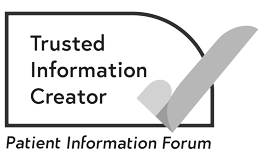Targeted therapies and immunotherapy for oesophageal cancer
What are targeted therapies?
Targeted therapy uses drugs to find and attack cancer cells. There are many different types of targeted therapy drugs. Each type targets something in or around the cancer cell that is helping it grow and survive.
Targeted therapy drugs are sometimes used to treat advanced oesophageal cancer.
Targeted therapy drugs for oesophageal cancer
Sometimes a targeted therapy drug called trastuzumab is given with chemotherapy to treat advanced oesophageal cancer.
Trastuzumab only works for people with an oesophageal cancer that:
- is an adenocarcinoma
- has high levels of a protein called HER2.
Doctors can test tissue taken at a biopsy or during surgery to find out if the cancer cells have high levels of HER2.
Trastuzumab attaches to the HER2 proteins on the surface of the cancer cells. This stops the cancer cells from dividing and growing.
Trastuzumab is given as a drip (infusion) every 3 weeks. If it works well, your cancer doctor may decide to keep giving it after your chemotherapy finishes. The side effects of trastuzumab are usually mild.
Other targeted therapies for oesophageal cancer
If you have squamous cell carcinoma or adenocarcinoma, you may be offered a newer type of treatment. This is called histology independent therapy (HIT). The HIT drugs currently available in the UK through the NHS are:
They may be used to treat people with a cancer that has a gene change called NTRK gene fusion. The drugs come as capsules you can take at home.
We have more information about HITs.
What is immunotherapy?
Immunotherapy drugs use the immune system to find and attack cancer cells.
If the cancer was in the area where the oesophagus joins the stomach, you may be offered an immunotherapy drug called nivolumab. Nivolumab targets and blocks a protein (receptor) called PD-1 on the surface of T cells, which are part of the immune system. They It also blocks another protein called PD-L1. This helps the immune system to find and attack the cancer cells.
Some people have tests on the cancer cells to check the levels of PD-L1. The results can tell your doctor how likely this type of immunotherapy drug is are to be helpful. Immunotherapy drugs can still work for you even if results do not show high levels of PD-L1.
You may be given nivolumab if you have already had chemoradiation and surgery. It is given to help reduce the risk of cancer coming back. Your cancer doctor can tell you more about whether nivolumab might be helpful in your situation.
Some people with advanced cancer of the oesophagus may be offered another immunotherapy drug called pembrolizumab, along with chemotherapy. This will depend on the treatments you have had before and the levels of PD-L1 that are found on the cancer cells. Your cancer doctor can tell you more about whether this might be suitable for you.
You have pembrolizumab, along with chemotherapy, as a drip (infusion) into a vein. A nurse will give them to you in the chemotherapy day unit.
Related pages
About our information
This information has been written, revised and edited by Macmillan Cancer Support’s Cancer Information Development team. It has been reviewed by expert medical and health professionals and people living with cancer.
-
References
Below is a sample of the sources used in our oesophageal cancer information. If you would like more information about the sources we use, please contact us at informationproductionteam@macmillan.org.uk
European Society for Medical Oncology. Oesophageal Cancer: ESMO clinical practice guidelines for diagnosis, treatment and follow up. 2022. Available from www.esmo.org/guidelines/guidelines-by-topic/gastrointestinal-cancers/oesophageal-cancer [accessed July 2023].
National Institute for Care and Health Excellence. Oesophago-gastric cancer: assessment and management in adults NICE guideline [NG83]. 2018. Available from www.nice.org.uk/guidance/ng83 [accessed July 2023].
Dr Chris Jones
Reviewer
Speciality Registrar in Clinical Oncologist and Clinical Lecturer in Clinical Oncology
Date reviewed

Our cancer information meets the PIF TICK quality mark.
This means it is easy to use, up-to-date and based on the latest evidence. Learn more about how we produce our information.
The language we use
We want everyone affected by cancer to feel our information is written for them.
We want our information to be as clear as possible. To do this, we try to:
- use plain English
- explain medical words
- use short sentences
- use illustrations to explain text
- structure the information clearly
- make sure important points are clear.
We use gender-inclusive language and talk to our readers as ‘you’ so that everyone feels included. Where clinically necessary we use the terms ‘men’ and ‘women’ or ‘male’ and ‘female’. For example, we do so when talking about parts of the body or mentioning statistics or research about who is affected.
You can read more about how we produce our information here.




